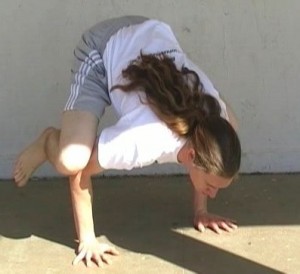Skipping the basics is one of the biggest and most fundamental flaws when training to do a handstand, whether it is solo or with a trainer. Handstand drills for beginners are a very necessary part of training to be able to do a perfect handstand. Many gymnastic coaches seem to skip the fundamental basics of training drills. They seem to invoke the theory that, in order for their gymnast to be able to do a full handstand, they have to make them try out right for one, over and over until it’s right. Sadly, these coaches are doing their pupils a great disservice. The value of learning the basics, step by step, is something that is far too often underestimated.
Handstand drills for beginners help break down the handstand into the basic steps involved, making it easier to get the whole thing executed in full later. This is starting from the lunge into the handstand, building up into posture and muscle tension during the handstand and ending out with a flawless return to standing upright with triumph. By practicing each step individually using drills that break down the different parts of a handstand into simpler movements, you help strengthen the muscles a gymnast needs in fully accomplishing a handstand.
With the right practice and patience, you can go from basic lunge drills into a full and glorious handstand, with your arms fully extended, straight strong shoulders, a solid core, and extended legs with proper body and muscle tension throughout. Trying for the full handstand right off the bat can not only be more difficult, but it can lead to frustration or even injury without ever properly achieving a full handstand. Before you jump right into it, get yourself warmed up with some basic handstand drills for beginners. It’s smarter, safer and leads to more flawless handstands.


 First a warning. I’ve said this many times before and will continue to say it. You must learn to stand on your hands first, before you start walking around. The reason for this is that if you learn to walk and never to stand, you will only be able to balance by walking around and never learn the necessary wrist and shoulder balance necessary for all other hand balancing.
First a warning. I’ve said this many times before and will continue to say it. You must learn to stand on your hands first, before you start walking around. The reason for this is that if you learn to walk and never to stand, you will only be able to balance by walking around and never learn the necessary wrist and shoulder balance necessary for all other hand balancing.








